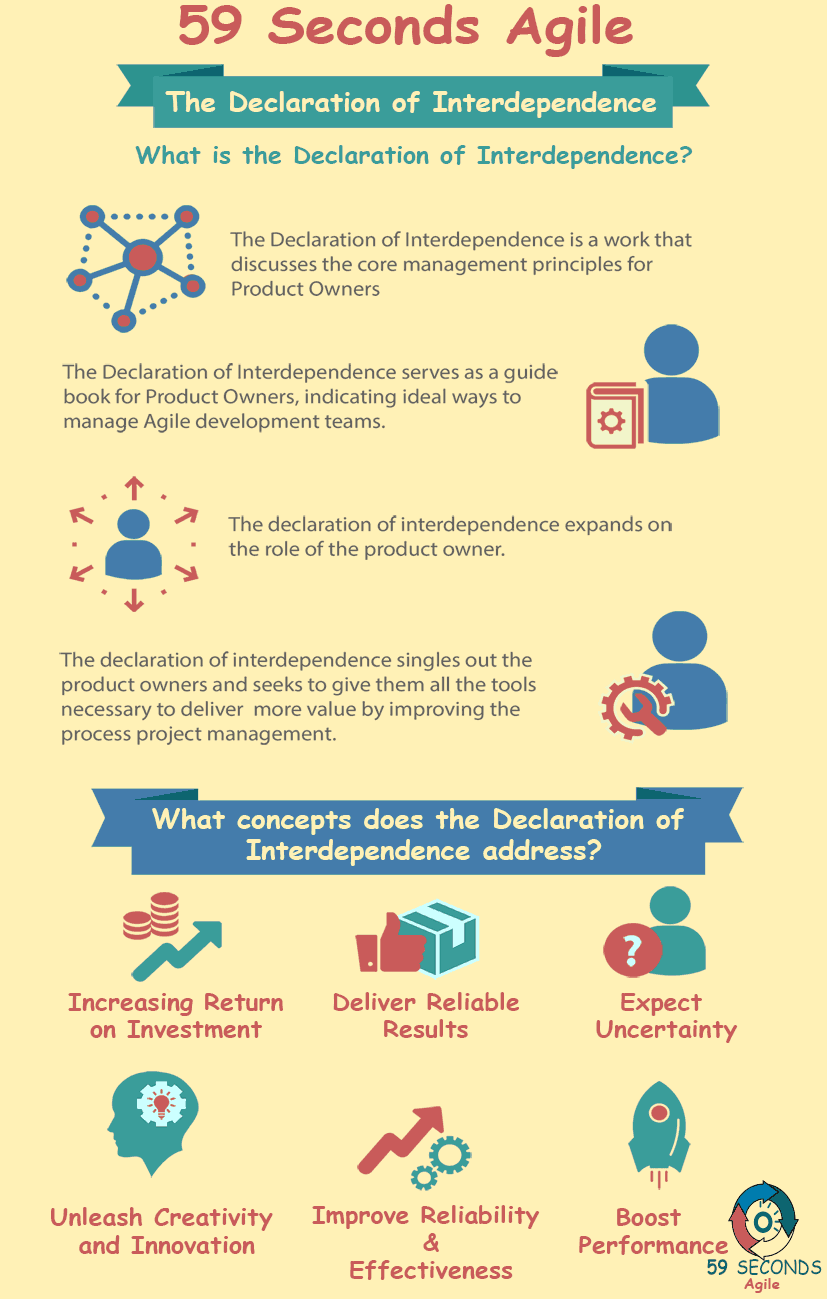The Agile Declaration of Interdependence
A 59 Seconds Agile Training Video
Continue to Part 12 Below
An Introduction to The Agile Declaration of Interdependence
A 59 Seconds Agile Article
This article provides an ‘Introduction to The Agile Declaration of Interdependence’ and looks to discuss the Key points within the Agile document.
The Declaration of Interdependence
The product owner in particular can use the Declaration to help facilitate the development process. I’m sure you’ve worked on a project where there is a traditional project manager relaying the product requirements and helping the team know what needs to be done. They’re doing the bare minimum, and they don’t really care about the product’s value.
This throws a big wrench into the development process. If, instead, we have a scrum product owner who follows the suggestions of the Declaration, the development process goes much more smoothly.
The product owner isn’t the only part of the team who can find the Declaration useful. The developers might not be the people facilitating the forward movement of the project, but they can still support the ideas in the Declaration.
Agile project management isn’t just a series of requirements to follow; it creates a specific work environment that produces continuous value. With the product owner and the developers all aware of the Declaration, the process of developing products will be open and efficient. Encouraging your teams to work by the ideas presented in the Declaration of Interdependence will decrease wasted time and money, and improve the efficiency of their product development process.
This means that you’ll be giving the best possible product to your customers, as well as building products that you, as a team, are proud of and feel a sense of ownership for.
Continue Reading —> Next
The Agile Declaration of Interdependence
A 59 Seconds Agile Video Animation
Continue Reading —> Next
User Stories Applied
A 59 Seconds Agile Book Review
User Stories Applied by Mike Cohn is one of our favourite books on Agile User Stories. The book starts with an overview into user stories, and details what a user story is and the different aspects of them. He then discusses how to go about writing a user story, and provides details of the INVEST criteria that can be used to determine if the story is meeting all of its objectives. Next Mike gives an in depth discussion of who user stories are written for and where to begin when gathering the details for them. The book then discusses acceptance testing user stories, including how to go about specifying these criteria and the responsibilities of the development team and customers during this process.
Continue Reading —> Next
The Declaration of Interdependence
A 59 Seconds Agile Infographic

Continue Reading —> Next
Agile Scrum Master Training Course
Our Favourite Agile Books
We found these books great for finding out more information on Agile Scrum:
Continue Reading —> Next

